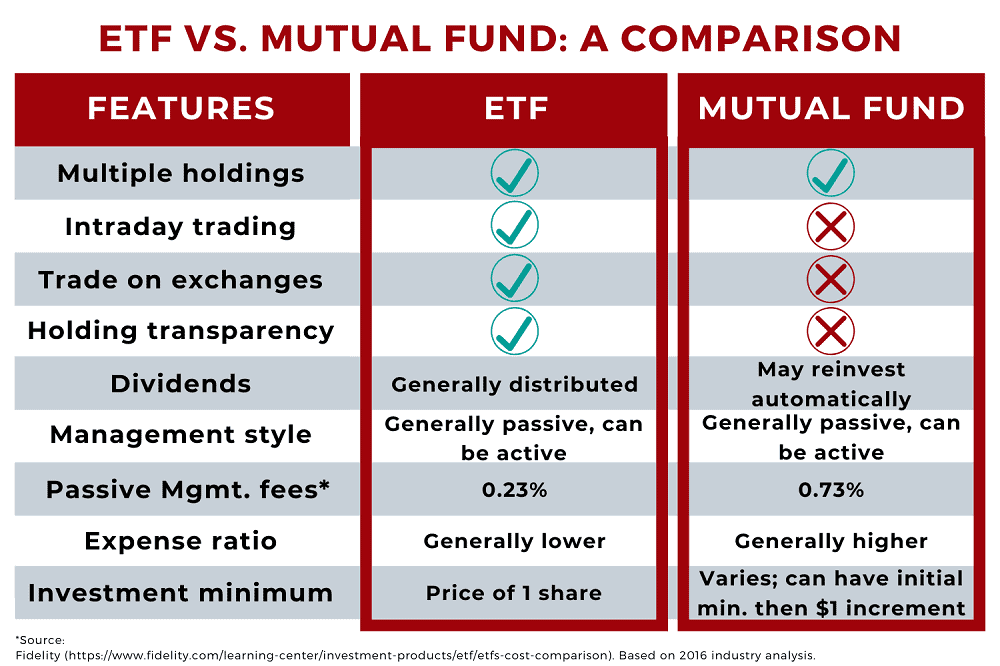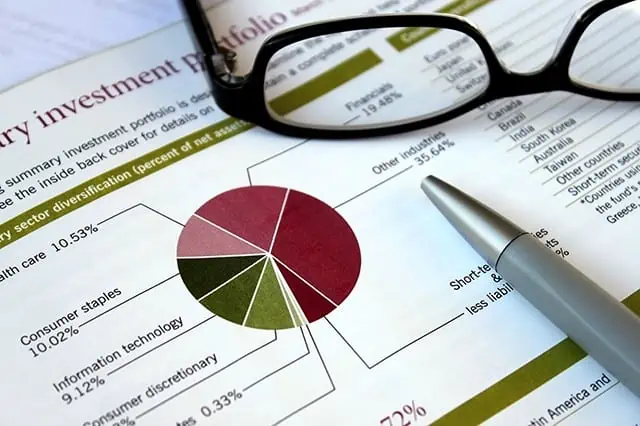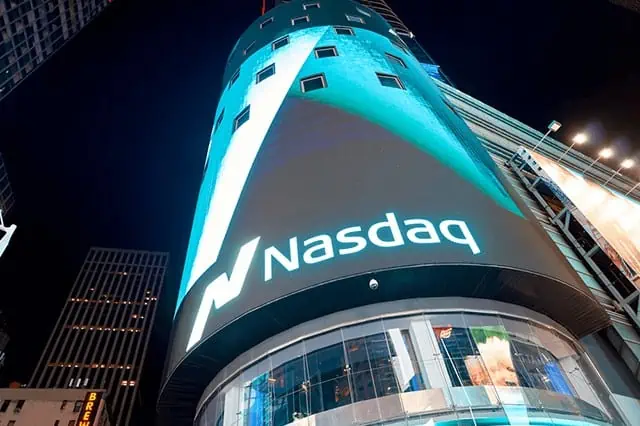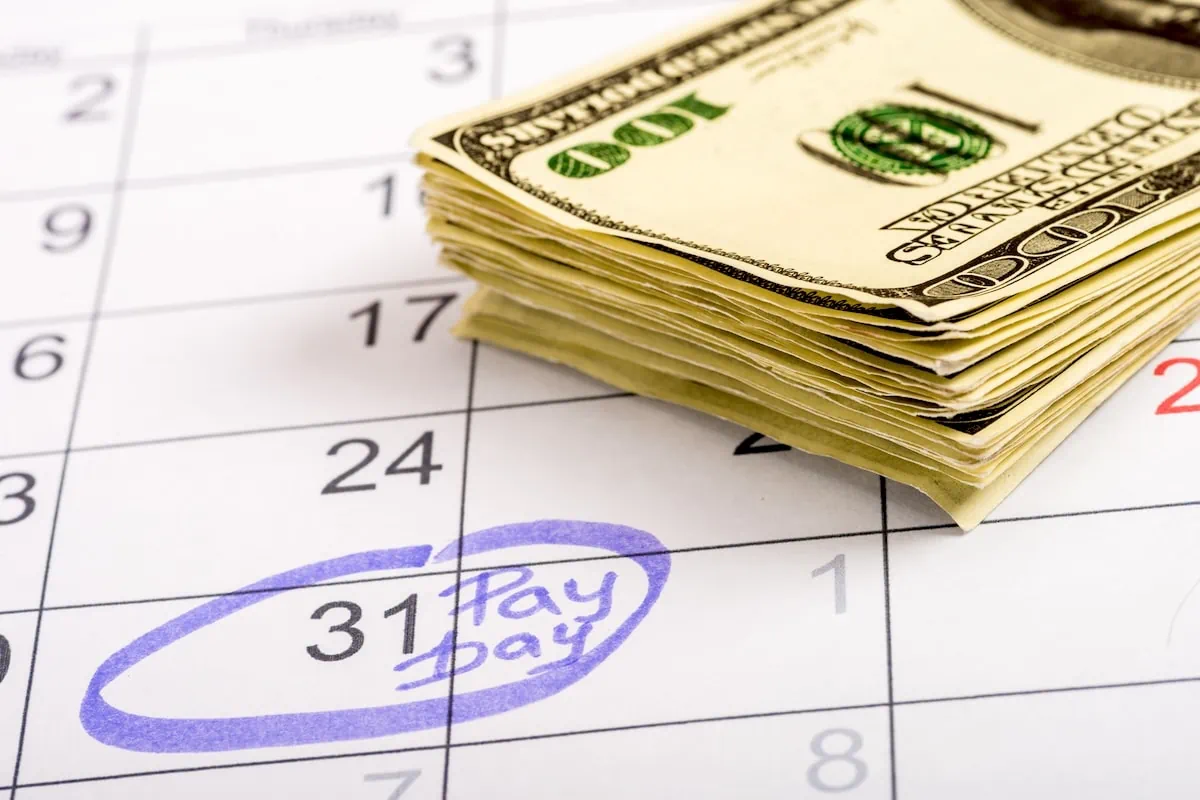The top exchange-traded funds from a fund provider like Fidelity include a little something for everyone.
If you want, a few of Fidelity’s exchange-traded funds give you cheap, passive exposure to basic broader market indexes, like the Nasdaq Composite.
However, where Fidelity really shines is by providing more tactical ways of tapping into specific areas of Wall Street. Sometimes, their best ETFs track more selective indexes. But sometimes, they rely on skilled investment managers who dig deep into their research resources to discover the best growth stocks or small-cap companies.
The overall takeaway: Whether you’re looking for plain, value-oriented passive ETFs, aggressive, actively managed ETFs, or something in between, the following list of seven of the top exchange-traded funds from Fidelity likely has something for you.
Disclaimer: This article does not constitute individualized investment advice. These funds appear for your consideration and not as personalized investment recommendations. Act at your own discretion.
Table of Contents
What Is an ETF?

The letters “ETF” stand for “exchange-traded fund.” Those first two words refer to the fact that these investment products are listed on an exchange, just like individual stocks. And as anyone who is even loosely familiar with Wall street should know, the last word—fund—is a grouping of different assets including stocks, bonds, and other investments.
The most exclusive investment funds run by elite firms are definitely not exchange-traded. They’re not even publicly traded. They often have huge investment minimums of $1 million or more, and are by invitation only. Conversely, an ETF is easily tradable and transparent in its returns; it fluctuates in price during a given trading day based on its underlying assets.
Anyone can buy these funds for the price they are listed at, just like your favorite blue-chip stocks.
ETFs vs. Mutual Funds

Mutual funds—ETFs’ older cousins—trade publicly, but they do not trade on an exchange. Investors looking to buy or sell can put in orders any time they’d like, but orders are only executed once each trading day, after the markets close at 4 p.m.
Exchange-traded funds, on the other hand, move up and down just like stocks or other assets during the trading day.
Also unlike mutual funds, ETFs don’t have minimum investment thresholds—the minimum cost is just one share (or less if your broker offers fractional shares). And ETFs are different from both mutual funds and closed-end funds (CEFs)—which also trade on major exchanges—because how they’re structured makes them more tax-efficient to buy and sell.
On top of all of this, most (but not all) ETFs are index funds that are benchmarked to a fixed list of assets, and thus are passively managed. However, most (but again, not all) mutual funds are actively managed by managers based on specific investment strategies. As a result, exchange-traded funds generally have a lower average expense ratio. But this relationship isn’t universally true—some actively managed ETFs can charge more than similar passively managed mutual funds!
In other words: Just like with any other investment, when it comes to buying ETFs, do your homework before buying.
Why Choose Fidelity ETFs?

The best Fidelity ETFs are often very tactical, typically focused on indexes that are not your typical vanilla benchmark like the S&P 500. They also can be actively managed with an eye toward providing investors an edge.
If you’re just looking for vanilla investments, Fidelity funds might not be for you. But if you want to get a little more sophisticated than a plain-Jane index of blue-chip stocks, and instead target certain market subsets such as mid-cap stocks, growth stocks, or small-cap companies, then a Fidelity fund might be the right move.
Related: The 7 Best Fidelity Index Funds for Beginners
The Best Fidelity ETFs

When selecting the best Fidelity ETFs for your personal portfolio, it’s important to take a good look at how the investments fit in with your overall strategy. Each of these Fidelity funds offers something different, and each can play an important role in your portfolio when they’re supported by other core holdings.
Related: The 7 Best Vanguard ETFs for 2024 [Build a Low-Cost Portfolio]
1. Fidelity MSCI Information Technology Index ETF

— Type: Sector (Technology)
— Assets under management: $11.6 billion
— Expense ratio: 0.084%, or 84¢ per year for every $1,000 invested
— Dividend yield: 0.7%
A passively managed Fidelity fund, the Fidelity MSCI Information Technology Index ETF (FTEC) is a popular sector ETF that includes about 300 different tech stocks. That allows investors to look deep into the sector—yes, the fund is heaviest in Silicon Valley mainstays, but you also get healthy exposure to mid-cap stocks and even small-sized companies.
Related: 7 High-Quality, High-Yield Dividend Stocks
That said, FTEC is heavily weighted in Apple (AAPL) and Microsoft (MSFT), with the fund investing more than 33% of its assets in this pair of stocks alone. This means AAPL and MSFT have much more influence than other stocks over how the ETF performs. But you can consider them a strong foundation for this tech-sector fund to help smooth out some of the volatility that smaller technology names might experience.
Related: The 7 Best Vanguard ETFs for 2024 [Build a Low-Cost Portfolio]
2. Fidelity Nasdaq Composite Index ETF

— Type: Large-cap growth
— Assets under management: $6.7 billion
— Expense ratio: 0.21%, or $2.10 per year for every $1,000 invested
— Dividend yield: 0.6%
The Fidelity Nasdaq Composite Index ETF (ONEQ) is a diversified index fund that holds many of the stocks listed on the Nasdaq Stock Market. But it’s not quite a perfect replica—it uses statistical sampling to come up with a sizable portfolio (more than a thousand holdings) that has a “similar investment profile” to the entire 2,500-stock Nasdaq Composite Index.
ONEQ is weighted by size, so the larger the company, the more assets are invested in that company’s stock. Thus, the biggest holdings are popular companies you might recognize: Apple, Microsoft, Amazon.com (AMZN) and Nvidia (NVDA).
Related: 10 Best Dividend Stocks to Buy [Steady Eddies]
As these top picks should illustrate, technology dominates the Nasdaq Stock Market—and this Fidelity fund as a result. The sector makes up about 48% of total assets, followed by communication services at 15% and consumer cyclical stocks at 14%.
Related: 7 Best Schwab ETFs to Buy [Build Your Core for Cheap]
Best Fidelity ETF #3: Fidelity Total Bond ETF

— Type: Core bond
— Assets under management: $12.2 billion
— Expense ratio: 0.36%, or $3.60 per year for every $1,000 invested
— SEC yield: 4.8%*
Another very popular and well-established Fidelity fund is the Fidelity Total Bond ETF (FBND). This is an actively managed bond fund that holds some 3,300 different debt securities to provide a yield that, at present, is more than four times the S&P 500’s yield right now.
Related: The 7 Best Dividend ETFs [Get Income + Diversify]
The title of this Fidelity ETF says it all. FBND holds rock-solid bonds from the U.S. Treasury, as well as a smattering of higher-risk but higher-return “junk” bonds from sub-par companies. About 33% of assets are in government bonds to provide a firm foundation, but 36% are in corporate bonds, some of which are loans to distressed companies that offer super-sized yields.
Want to put the wisdom of this asset manager’s experts to work in your portfolio? FBND is one of the best Fidelity ETFs to do just that. In fact, we like FBND so much, we’ve named it one of our 24 Best ETFs for 2024.
* SEC yield reflects the interest earned across the most recent 30-day period. This is a standard measure for funds holding bonds and preferred stocks.
Related: The 9 Best ETFs for Beginners
4. Fidelity MSCI Health Care Index ETF

— Type: Sector (Health care)
— Assets under management: $3.0 billion
— Expense ratio: 0.084%, or 84¢ per year for every $1,000 invested
— Dividend yield: 1.2%
Many investors are drawn to the health care sector because of its lower risk profile and consistency. After all, one of the few certainties in life is that we’ll all get sick eventually, and need care as we age.
Related: 12 Best Long-Term Stocks to Buy and Hold Forever
If this approach appeals to you, the Fidelity MSCI Health Care Index ETF (FHLC) is one of the best Fidelity ETFs to buy. The fund holds nearly 400 stocks across the pharmaceutical, biotechnology, medical device, health insurance, and other industries. This Fidelity health care fund is currently led by insurance giant UnitedHealth Group (UNH), diversified health care giant Johnson & Johnson (JNJ), and Big Pharma mainstay Eli Lilly (LLY).
In short, FHLC is a simple and effective way to play the health care sector.
Like Young and the Invested’s content? Be sure to follow us.
5. Fidelity High Dividend ETF

— Type: Dividend stock
— Assets under management: $3.6 billion
— Expense ratio: 0.15%, or $1.50 per year for every $1,000 invested
— Dividend yield: 2.8%
If you’re interested in yield but would prefer dividend stocks to the bond market, you can consider the Fidelity High Dividend ETF (FDVV). This fund holds a focused list of only about 110 or so stocks, but it’s one of the best Fidelity ETFs because of its selectivity.
Related: The 7 Best Dividend ETFs [Get Income + Diversify]
Specifically, FDVV zeroes in on the very best dividend payers based on consistency of distributions, a strong history of payouts, and expectations that they’ll continue to grow those dividends going forward.
Top holdings include tech giant Microsoft, Big Oil titan Exxon Mobil (XOM), and mega-bank JPMorgan Chase (JPM), among other massive blue chips.
Related: 10 Best Stock Picking Services, Subscriptions, Advisors & Sites
6. Fidelity Enhanced Large Cap Growth ETF

— Type: Growth stocks
— Assets under management: $2.7 billion
— Expense ratio: 0.18%, or $1.80 per year for every $1,000 invested
— Dividend yield: 0.8%
If 2022 and 2023 were characterized by trepidation about a potential economic slowdown and the impact of increased interest rates, 2024 seems to be starting off with a focus on growth and opportunities. If you’re interested in pursuing this strategy, then, consider the Fidelity Enhanced Large Cap Growth ETF (FELG).
Related: The 24 Best ETFs to Buy for a Prosperous 2024
As the name implies, the focus of this stock is the largest growth-oriented names on Wall Street. The portfolio is comprised of about 100 total stocks right now, led by favorites like iPhone manufacturer Apple and dynamic chipmaker Nvidia. In fact, nearly half of assets are in technology stocks at present, which shouldn’t be surprising after the run for the sector over the last year.
If the economy takes a tumble, then growth could fall out of favor once more. But if you’re looking beyond interest-rate changes and want to invest in the continued growth of leading U.S. corporations, FELG is a simple and effective way to do so.
Related: 12 Best Investment Opportunities for Accredited Investors
7. Fidelity Low Volatility Factor ETF

— Type: Low-volatility stock
— Assets under management: $1.3 billion
— Expense ratio: 0.15%, or $1.50 per year for every $1,000 invested
— Dividend yield: 1.3%
If you’re not as high on the prospect of growth in 2024, investors looking for more stable options might want to consider the Fidelity Low Volatility Factor ETF (FDLO).
Related: 12 Best Long-Term Stocks to Buy and Hold Forever
As the name implies, the 130 or so stocks that make up this fund have been selected because they exhibit less volatility than their peers. Or in other words, when the stock market moves, these stocks on average tend to move less aggressively—in either direction.
That means FDLO holds entrenched stocks such as Apple, mega-bank JPMorgan Chase, and credit card giant Visa (V). If you want exposure to stocks but aren’t a fan of the ups and downs, FDLO might be a good option.
Related: Best Schwab Retirement Funds for an IRA
Learn More About These and Other Funds With Morningstar Investor

If you’re buying a fund you plan on holding for years (if not forever), you want to know you’re making the right selection. And Morningstar Investor can help you do that.
Morningstar Investor provides a wealth of information and comparable data points about mutual funds and ETFs—fees, risk, portfolio composition, performance, distributions, and more. Morningstar experts also provide detailed explanations and analysis of many of the funds the site covers.
With Morningstar Investor, you’ll enjoy a wealth of features, including Morningstar Portfolio X-Ray®, stock and fund watchlists, news and commentary, screeners, and more. And you can try it before you buy it. Right now, Morningstar Investor is offering a free seven-day trial. You can check out the current deal, as well as discounted rates for students and teachers, in our details box below.
Do Fidelity ETFs Include Actively Managed Funds?

Yes. Many of Fidelity’s mutual funds made a name for themselves thanks to strong active management. And the Fidelity Total Bond ETF (FBND) is a good example of how this strategy can be put to use in exchange-traded Fidelity funds. As of this writing, Fidelity had 26 actively managed ETFs, including the likes of FBND, Fidelity Blue Chip Growth ETF (FBCG), and Fidelity Small-Mid Cap Opportunities ETF (FSMO).
Related: The 7 Best Mutual Funds for Beginners
Fidelity also has funds like the Fidelity High Dividend ETF (FDVV), which are labeled as “strategic beta” funds. That’s because they take an underlying index but put additional screening methodology on top to provide a more curated list of holdings.
You’ll certainly find passive, indexed ETFs among Fidelity’s funds. But there are certainly actively managed funds, too.
Does Fidelity Have ESG ETFs?

Yes. Several Fidelity funds focus around environmental, social, and governance (ESG) topics, with a heavy lean toward the “E.”
For instance, the Fidelity Sustainable U.S. Equity ETF (FSST) owns companies determined to have proven or improving sustainability practices. The Fidelity Clean Energy ETF (FRNW) holds companies involved in solar, wind, or other renewable resources. And the Fidelity Electric Vehicles and Future Transportation ETF (FDRV) invests in electric-vehicle and EV component makers; however, the fund also homes in on autonomous-vehicle firms, which can (but don’t necessarily have to) focus on environmental friendliness.
Related: Best Vanguard Retirement Funds for a 401(k) Plan
Why Does a Fund’s Expense Ratio Matter So Much?

Every dollar you pay in expenses is a dollar that comes directly out of your returns. So, it is absolutely in your best interests to keep your expense ratios to an absolute minimum.
The expense ratio is the percentage of your investment lost each year to management fees, trading expenses and other fund expenses. Because index funds are passively managed and don’t have large staffs of portfolio managers and analysts to pay, they tend to have some of the lowest expense ratios of all mutual funds.
Related: The 7 Best Index Funds for Beginners
This matters because every dollar not lost to expenses is a dollar that is available to grow and compound. And over an investing lifetime, even a half a percent can have a huge impact. If you invest just $1,000 in a fund generating 5% per year after fees, over a 30-year horizon, it will grow to $4,116. However, if you invested $1,000 in the same fund, but it had an additional 50 basis points in fees (so it only generated 4.5% per year in returns), it would grow to only $3,584 over the same period.
Like Young and the Invested’s content? Be sure to follow us.
Related: 6 Best Stock Recommendation Services [Stock Picking + Tips]

Stock recommendation services are popular shortcuts that help millions of investors make educated decisions without having to spend hours of time doing research. But just like, say, a driving shortcut, the quality of stock recommendations can vary widely—and who you’re willing to listen to largely boils down to track record and trust.
The natural question, then, is “Which services are worth a shot?” We explore some of the best (and best-known) stock recommendation services.
Related: 12 Best Long-Term Stocks to Buy and Hold Forever
As even novice investors probably know, funds—whether they’re mutual funds or exchange-traded funds (ETFs)—are the simplest and easiest ways to invest in the stock market. But the best long-term stocks also offer many investors a way to stay “invested” intellectually—by following companies they believe in. They also provide investors with the potential for outperformance.
So if your’e looking for a starting point for your own portfolio, look no further. Check out our list of the best long-term stocks for buy-and-hold investors.
Related: Best Target-Date Funds: Vanguard vs. Schwab vs. Fidelity

Looking to simplify your retirement investing? Target-date funds are a great way to pick one fund that aligns with when you plan to retire and then contribute to it for life. These are some of the best funds to own for retirement if you don’t want to make any investment decisions on a regular basis.
We provide an overview of how these funds work, who they’re best for, and then compare the offerings of three leading fund providers: Vanguard, Schwab, and Fidelity.
Related: 9 Best Monthly Dividend Stocks for Frequent, Regular Income

The vast majority of American dividend stocks pay regular, reliable payouts—and they do so at a more frequent clip (quarterly) than dividend stocks in most other countries (typically every six months or year).
Still, if you’ve ever thought to yourself, “it’d sure be nice to collect these dividends more often,” you don’t have to look far. While they’re not terribly common, American exchanges boast dozens of monthly dividend stocks.
Please Don’t Forget to Like, Follow and Comment

Did you find this article helpful? We’d love to hear your thoughts! Leave a comment with the box on the left-hand side of the screen and share your thoughts.
Also, do you want to stay up-to-date on our latest content?
1. Follow us by clicking the [+ Follow] button above,
2. Subscribe to The Weekend Tea, our weekly newsletter to read more about investing, spending, taxes, and more, and
3. Give the article a Thumbs Up on the top-left side of the screen.
4. And lastly, if you think this information would benefit your friends and family, don’t hesitate to share it with them!





